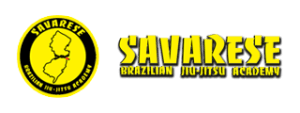Lyndhurst Jiu-Jitsu team shines at JJWL
/in Uncategorized /by savareseLyndhurst Jiu-Jitsu team shines at JJWL
Savarese Jiu-Jitsu, the Lyndhurst Jiu-Jitsu team shines at JJWL this weekend! Our competition team had 3 people enter and all team came home finishing on the medal stand. Congrats to Cheryl Yang on taking 2nd place in her bluebelt division at the Jiu-Jitsu World League tournament in Trenton today. I’m so proud of Cheryl not just for her performance today, but because of the commitment she made a month and a half ago and the progress she has made in the training room over that month. Sometimes it’s not about the outcome but the lead up to the tournament where the progress is made. Great job Cheryl! So proud of you! Jasmine enters her first tournament in a log time and did great, coming hone with the bronze medal in her division. Futhermore, major congrats to Juelz Hernandez on taking gold in his bluebelt no-gi division today at the Jiu-Jitsu World League tournament. Juelz also took 3rd in the gi going 4-1 on the day. I am so proud of this kid, he has the perfect attitude for Jiu-Jitsu, he is having fun and racking up title. He only training for a year and has been getting better literally every week. I cannot wait to see this kid at the upperbelts. He is gonna be a PROBLEM. Keep it up Juelz, don’t change a thing. If you are interested in joing out Lyndhurst Jiu-Jitsu team, leave your info at www.njbjj.com
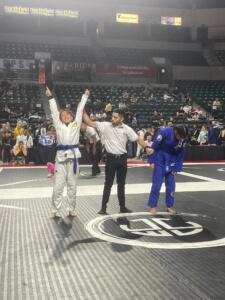
Lyndhurst Jiu-Jitsu team shines at JJWL
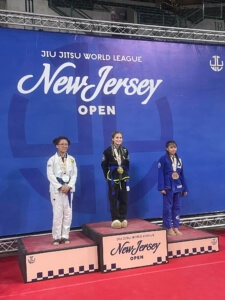
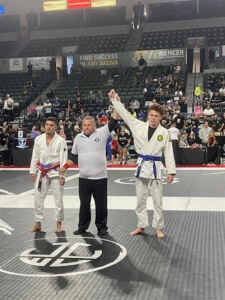
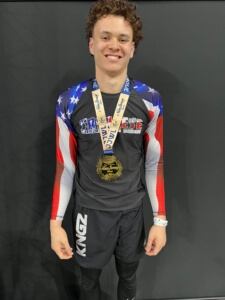
Your Jiu-Jitsu set ups
/in Uncategorized /by savareseYour Jiu-Jitsu set ups
Your Jiu-Jitsu foundation
/in Uncategorized /by savareseYour Jiu-Jitsu foundation
Your Jiu-Jitsu foundation is everything. The great Rickson Gracie used to say “if you you don’t have the proper foundation, the house will fall down, same with your Jiu-Jitsu. ” If you’re going to bear an opponent’s weight, make sure your structure is sound. The fastest way to get exhausted in a match is to carry an opponent’s weight in a mechanically inefficient way. So whenever you have to carry weight, your first step is to get into a position or structure that enables you to carry it efficiently. This will vary according to the scenario. How you carry an opponent’s weight will vary greatly based on whether you’re working in a pin, a takedown, from bottom guard position etc. whichever scenario you’re in, there are efficient ways to carry weight and inefficient, make it your habit to quickly work your way into efficient physical structure so that you don’t exhaust yourself, and as always. Spend as little time as possible in a match carrying an opponents weight anywhere other than on your legs and hips. If you follow these methods, you will watch as your jiu-Jitsu grows, little by little, day by day. For more BJJ tips and techniques, follow us on Instagram at https://www.instagram.com/savaresebjj/
Lyndhurst Jiu-Jitsu Academy celebrates 18 years!
/in Uncategorized /by savareseLyndhurst Jiu-Jitsu Academy celebrates 18 years!
Lyndhurst Jiu-Jitsu Academy celebrates 18 years! Congrats to Savarese Jiu-Jitsu, long considered one of the top Jiu-Jitsu Academies on the East Coast, on the milestone achievement!
Message from Professor Savarese
Seeing vs doing in Jiu-Jitsu
/in Uncategorized /by savareseSeeing vs doing in Jiu-Jitsu
There is a big difference between seeing vs doing in Jiu-jitsu. Your best learning probably won’t happen when someone shows you something. It’ll happen when you put whatever they show you into practice in a messy, blundering kind of way. The nature of jiu-jitsu is such that there’s always a gap between seeing what to do and then doing it. Furthermore, often that gap is wider than we initially think. We can’t really know that our understanding is wrong until we test it out and see whether it works. Unfortunately, at some point in this process, our fear of failure often kicks in. We forget that the temporary failure we experience when we’re learning is very different than a larger, global failure of our whole approach. Progress in jiu-jitsu works as a cycle where we make mistakes, get a little better, then make more mistakes. It’s possible to set it up so you rarely fail, but do you really want to do that? Playing it safe may mean less risk, but it also means fewer lessons. If you want to get good at BJJ, you have to ‘do’. For more tips, follow us on IG at https://www.instagram.com/savaresebjj/
Sparring with a purpose in BJJ
/in Uncategorized /by savareseSparring with a purpose in BJJ
This is what I mean when I say sparring with a purpose in BJJ. The vast majority of jiu-jitsu athletes enter every sparring session with a let’s see what happens attitude. Let me tell you something, whenever you enter sparring with a let’s see what happens attitude, you will 100% end up doing the same things you did in all your other previous training sessions you had over the last day, month, year or years. Left to their own devices, BJJ practitioners will always go back to their habits. The idea of progressive training is to create NEW habits, not simply repeat old ones. Change within yourself has to be FORCED, it won’t happen by itself. The best way to make this happen is to have a clear goal(s) when you spar. Usually the goals are very modest – a new grip, a new set up for a favorite move, perhaps a new move you think has potential. Only by bringing in new material and improving old material will you make progress. This is best done by having a notion of what you want to accomplish before you slap hands and commence sparring. Of course there are days where you just want to spar with an open and relaxed mind and have fun seeing what happens – that is fine and healthy. However, make sure a healthy percentage of your sparring sessions involve clear prior goals to prevent them degenerating into more of the same sessions where you walk out the same the same as you walked in the door.
Don’t force moves in Jiu-Jitsu
/in Uncategorized /by savareseDon’t force moves in Jiu-Jitsu
Don’t force moves in Jiu-Jitsu! Sometimes, we get tunnel vision in trying to get the move we are looking for. Do you ever latch onto a particular strategy or technique and insist on making it work at any cost? While you can sometimes pull it off, you often end up working more with what you think is going on and less with the actual circumstances before you. Theoretically what you’re doing should work, but suddenly your partner moves out of position, the range or angle is wrong and you wanted isn’t there. You’re working in the past, not the present, rather than change with the moment, you’ve held on too long and are now left to scramble. We have to look at things as they are, as they’re happening, and check up to make sure we are where we think we are. This process, freeing ourselves from the overriding obsessions that block the creative flow, on the mat or anywhere else – is difficult to master but is a big part of the total experience of the training. for more BJJ tips, follow us at https://www.instagram.com/savaresebjj/
Working skills vs flashy skills in Jiu-Jitsu
/in Uncategorized /by savareseWorking skills vs flashy skills in Jiu-Jitsu
Scrambling in Jiu-Jitsu
/in Uncategorized /by savareseScrambling in Jiu-Jitsu
Scrambling in Jiu-Jitsu can be good or bad. It’s a conundrum. Any time you enter into a scramble with an opponent and neither of you has definitive control over the other and one has the threat of gaining advantageous position – you’re going to have to raise your energy expenditure to cope with the situation regardless of whether your the attacker or the defender. As the attacker it’s worth the extra energy expense because of the chance of a score. As the defender it’s worth the energy expenditure because you don’t want to concede a score. The question becomes – at what point do you stop the scramble because it’s costing you too much energy and the probability of a favorable outcome has diminished to a point where it makes more sense to stop scrambling? Its never easy to answer these questions. There are too many variables so each has to be answered on a case by case basis, but one thing can be said in every case – the athlete who can PROLONG A SCRAMBLE while keeping energy expenditure within acceptable limits has a huge advantage in a competitive match. Anyone can pace themselves in a controlled situation, but only the best can do so in a chaotic situation
SAVARESE BRAZILIAN JIU-JITSU ACADEMY
Review Us
The greatest compliments we could ever receive are the kind words you share with others.
